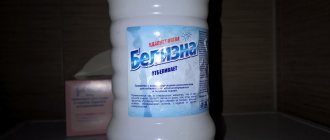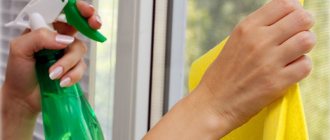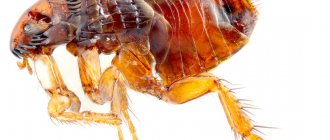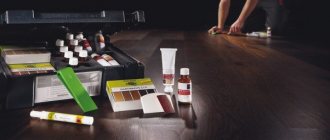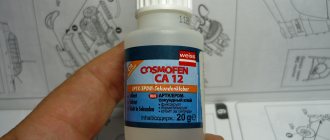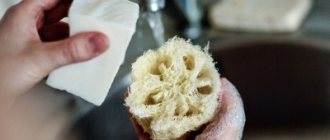The honor of the discoverer of the drug Dioxidin belongs to the team of scientists led by E.N. Padeiskaya from the Moscow Institute named after. A.V. Vishnevsky. Modern Russian manufacturers produce Dioxidin in ampoules containing 5 mg/ml (0.5%) and 10 mg/ml (1%) of the active substance.
Different concentrations of Dioxidin solution are intended for intravenous, external, and intracavitary use. 40 years of experience in the clinical use of Dioxidin ampoules has shown the effectiveness of using this drug, but only in exceptional cases and only as prescribed by a doctor.
Instructions for use of ampoule solution 5 mg/ml
Dioxidin in a solution with a concentration of 5 mg/ml or 0.5% is used:
- for intravenous infusions;
- injected into the bronchi;
- for treating external wounds, burns, ulcers;
- for instillation into the nose, ears.
Dioxidin ampoules 5 mg/ml are made from transparent glass, with a volume of 5 ml or 10 ml. One cardboard pack contains 10 ampoules.
Indications
Instructions for the use of Dioxidin in ampoules allow intravenous drip infusion of a 0.5% solution only when absolutely necessary. These conditions include:
- aerobic infections - streptococci, staphylococci, meningococci, Proteus, Escherichia coli, Shigella, Salmonella, Mycobacterium tuberculosis;
- anaerobic infections - clostridia, bacteroides, peptostrepotococci;
- extensive purulent lesions of the lungs, stomach and intestines, skin, muscles, bones, joints, brain;
- prevention of infections after complex operations on internal organs.
A life-threatening process in which an intravenous antiseptic solution is indicated is sepsis. Sepsis is diagnosed when all organs are affected by pathogenic microbes that spread from the source of inflammation through the bloodstream.
How to give injections?
Dioxidin injections are given only by intravenous infusion through a drip. Infusion - the process of administering Dixidin solution through a vein at a rate of 50-60 drops per minute
.
For injections, Dioxidin solution 5 mg/ml is diluted to a concentration of 1 or 2 mg/ml using 5% glucose or 0.9% sodium chloride solutions.
The maximum single dose of an antimicrobial drug intravenously does not exceed 0.3 g. This dose corresponds to 300 ml of a 0.1% solution or 150 ml of a 0.2% solution of the drug.
The maximum daily dose of antiseptic is more than 0.6 g. The use of the drug Dioxidin in ampoules for intravenous infusion is allowed 2 times a day. Before administration, the antimicrobial solution is heated to 400C, otherwise the patient will go into shock. It is advisable to do a drug tolerance test.
Dioxidin injections can only be administered by medical workers in a hospital setting.
. A patient on a drip is under the supervision of a doctor/nurse, as the following may develop:
- anaphylactic shock;
- chills, fever;
- acute adrenal insufficiency;
- uncontrolled contractions of the calf muscles.
To prevent allergic complications, antihistamines are administered simultaneously with Dioxidin.
External and local use
Externally, Dioxidin ampoules with a solution of 5 mg/ml are used when treating:
- purulent wounds;
- burns with suppuration;
- ulcerative skin defect with varicose veins, diabetes mellitus;
- purulent processes of bone tissue, periosteum, bone marrow;
- fistula tracts opening onto the skin.
Intracavitary use of a 0.5% concentration of antiseptic is justified in the following cases:
- purulent inflammation of the pleura;
- lung abscess;
- empyema of the gallbladder;
- inflammation of the bladder with copious purulent exudate;
- deep suppurating wounds of the skin, muscles, bones.
Peritonitis is inflammation of the peritoneum due to infection of the gastrointestinal tract and pelvis. Washing the abdominal cavity with an antiseptic during peritonitis saved the lives of 67% of patients.
Some tips
With ampoules with a dot, everything is clear. They are the easiest to open. I'll give some advice about those without it:
- Save the scarifier if you find it in the box. Just in case. It is good to saw with the bottom, but it is better with a special file.
- If there is a stripe on the neck, cut exactly along it. This is the weakest point - the point of fracture. If there is no strip, make a notch at the base of the neck.
- There is no need to saw through the glass. It is enough for a small depression to appear on the glass.
- Hold the ampoule with the neck facing up. Otherwise the medicine will spill.
I know that many people are afraid to open ampoules at home. That's why I decided to share the subtleties. Doing this for the first time is scary. And from the second or third ampoule you begin to feel like a real nurse. Try it and don't be afraid. Even if something doesn't go according to plan, the glass will remain in the napkin. Good luck!
How to use ampoules 10 mg/ml
Antiseptic ampoules 10 mg/ml have a concentration of active substance of 1%. For intravenous administration, ampoules of 10 mg/ml are not used due to the instability of the Dioxidin solution. Instructions on how to use Dioxidin in 10 mg/ml ampoules determine their external and intracavitary use.
What is this form of medicine for?
Regarding what makes it advisable to use Dioxidin in 10 mg/ml ampoules, there are a number of indications:
- external wounds, shallow burns with copious pus, which cannot be treated with other antibiotics;
- limited (abscess) or diffuse (phlegmon) lesions of the skin and subcutaneous tissue;
- purulent-inflammatory processes of the lungs, urinary or gall bladder;
- postoperative complications;
- diseases of the ENT organs of a bacterial nature;
- Maxillofacial Surgery.
Dioxidine solution 1% is not recommended for pregnant and lactating women, children under 18 years of age, and patients with adrenal and renal insufficiency.
Can it be used on the nose?
Dioxidine can be instilled into the nose for rhinitis and sinusitis that is resistant to other antiseptics.
. Dioxidin in ampoules of 10 mg/ml is used in the nose, diluted to a concentration of 1/2/5 mg/ml. The diluent is saline solution.
Using a pipette, add 2-3 drops of a 0.1/0.2/0.5% antiseptic solution into the previously cleaned nasal passages. Per day, 3 instillations are performed. Treatment lasts from 5 to 10 days, can be extended as prescribed by the doctor. A repeat course is possible in a month.
In addition to instillation, you can use Dioxidin by irrigating or washing the nasal cavity. For irrigation, the antiseptic solution is poured into a bottle with a spray nozzle. It is convenient to rinse your nose at home using a rinsing device from Dolphin.
How to use?
Externally, Dioxidin in ampoules of 10 mg/ml is used as follows:
- clean the wound from crusts and dead tissue;
- soak a sterile gauze pad with a 1% solution;
- apply a napkin to the wound, secure with a bandage;
- change 1 time per day.
Treatment is continued for up to 3 weeks. When used topically, allergic reactions are possible - rash, peeling, itching of the skin at the site of contact with the medicine.
Inside cavities and deep wounds, 1% antiseptic is administered with a catheter, drainage tube or syringe without a needle attached to the drainage tube. Use no more than 10-50 ml of a one percent solution of an antibacterial drug at a time
. The patient may feel headache, nausea, vomiting, bowel movements, leg muscle cramps.
Description
This medication not only helps to perfectly eliminate the inflammatory process and suppress the activity of pathogens. It effectively helps with purulent infections, prevents possible complications after surgical interventions, and counters the sources of the disease that have become resistant to antibiotics.
How long can an open ampoule of Dioxidine be stored? It is important to know that the medicine, if used incorrectly or uncontrolled, can provoke various adverse reactions. The same negative effects may occur when using a drug that was improperly stored after opening.
How to store after opening?
When using an antimicrobial solution for instillation into the nose and ears, it becomes necessary to keep the ampoule open. Knowing how to store Dioxidin in ampoules after opening, you can avoid mistakes during treatment. Cover the neck of the open ampoule with a band-aid, blocking the flow of oxygen. Then put it in the original packaging of the drug and place it vertically in the refrigerator.
Keep the medicine in the refrigerator for no more than 24 hours from the moment of opening. At temperatures below 150C, Dioxidin precipitates in crystals. This is a reversible process; the crystals will dissolve if you warm the ampoule with your palms or dip it in warm water.
Ointment storage
The conditions and shelf life of dioxidine in the form of an ointment are almost the same as that of a solution. The drug is kept in a hermetically sealed tube in a dark, cool place (temperature +5°C - +25°C). After opening, the composition should be used within the period specified in the instructions.
Even if the shelf life of the medicine has not yet expired, before using it you should make sure that it is not spoiled. If there is a change in color or consistency, as well as the formation of a sharp specific odor, the ointment should not be used.
Review of analogues
There are analogues of Dioxidin in ampoules. They have the same active ingredient and similar pharmacological characteristics. These include drugs:
- Dixin;
- Dioxysept;
- Diquinoxide;
- Urotravenol;
- Imibact;
- Viumksidin.
All analogues of Dioxidine in ampoules are derivatives of quinoxaline, exhibit strong antimicrobial properties, and are used as reserve drugs when antibiotic therapy fails.
When is the medication prescribed?
Regardless of the release form, Dioxidin affects pathogens, destroying them from the inside. With the help of this, the suppression of the inflammatory process is accelerated, and damaged areas are rapidly regenerated. Ampoules are usually prescribed for the following conditions:
- Sepsis (an infectious disease that occurs when pathogens progress and spread throughout the body).
- Peritonitis (inflammatory lesion of the peritoneum, which is accompanied by a serious condition of the body).
- A disease that is localized in the soft membrane of the brain when pyogenic bacteria enter it.
- Lung abscess (a disease that is accompanied by the formation of a pus cavity in the tissue of this organ).
conclusions
Dioxidin ampoules are used in the following ways:
- a solution of 5 mg/ml is administered intravenously, purulent wounds, burns are treated, instilled into the nose, ears;
- a solution of 10 mg/ml is effective for packing deep wounds and washing cavities;
- an antiseptic diluted to 1-2 mg/ml is poured into a nebulizer;
- The opened ampoule is stored in the refrigerator, sealed with a band-aid, for no more than a day.
Dioxidin is toxic not only to microbes, but also to humans. Its use is based on vital necessity, taking into account the negative consequences for health.
Opening the ampoule with a dot
Maybe I’ll say something stupid, but the first thing I thought was that you need to pierce the point with a syringe and a needle and draw out the medicine like that (and that would be nice). Of course, nothing came of this. The point is needed for reference. When the neck breaks off, it is placed in front.
The dot marks the most vulnerable spot - the most fragile glass wall.
We recommend: When trash is a joy: a fun DIY bin made from old tires and 5 more original ideas
I’ll tell you in detail how I opened my “Dioxidin”:
- First, we prepare: a sterile syringe, a damp alcohol wipe (alcohol with cotton wool), the ampoule we need.
- Let's sit down more comfortably. I tried to open the medicine while standing. I concluded that sitting is much easier.
- We take the ampoule with our left hand so that the point looks directly at us. The thumb is in front of the neck, all the rest are behind.
- With our right hand we take the napkin and, without unfolding it, wrap it around the neck. We grasp it in the same way as the lower part - with the thumb forward.
- Without squeezing the glass, we sharply move the brush back. That is, from myself. That's it, the ampoule is “hacked.”
- We draw the medicine for injection into the syringe.
Imagine breaking a chocolate bar. Everything is exactly the same here.
What negative reactions does the medication provoke?
The drug "Dioxidin", like any other drug, can cause certain side effects. For intravenous and intracavitary use it is:
- Migraine.
- Nausea.
- Diarrhea.
- Fever.
- The formation of pigment spots on the surface of the skin as a result of direct action of ultraviolet rays.
- Allergic manifestations.
Topical use of expired Dioxidin in most situations leads to the development of itching or dermatitis on the treated skin. If one of the listed conditions occurs, you should immediately contact a medical specialist.

